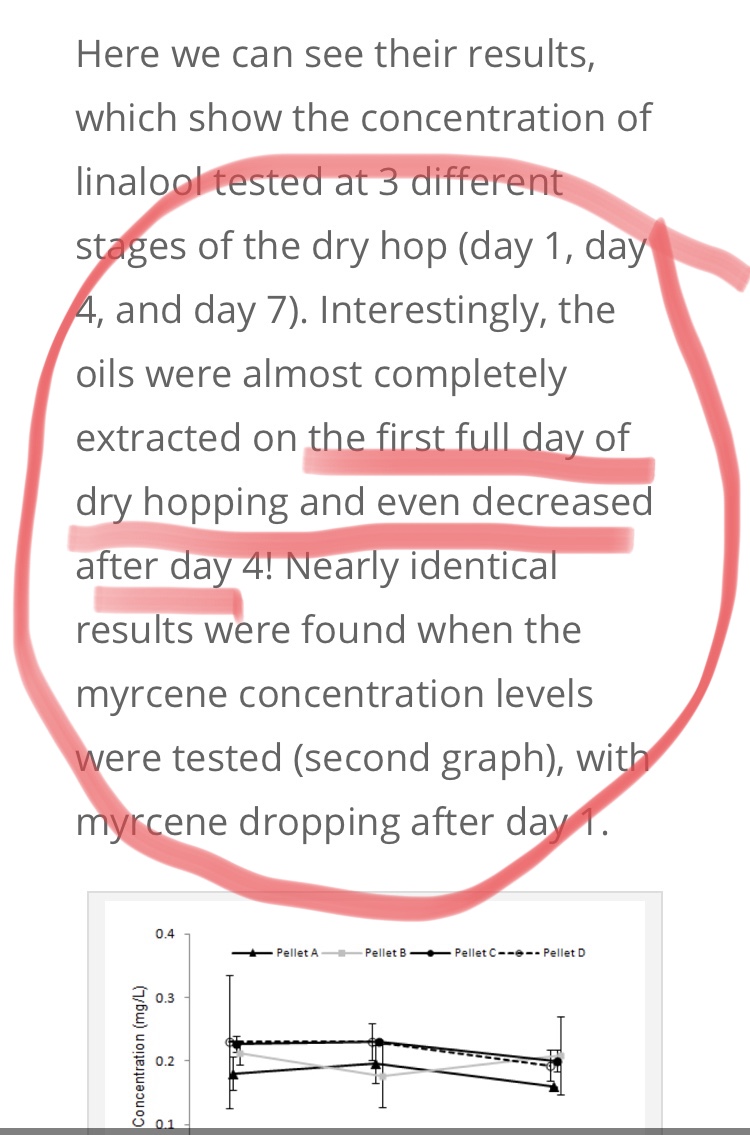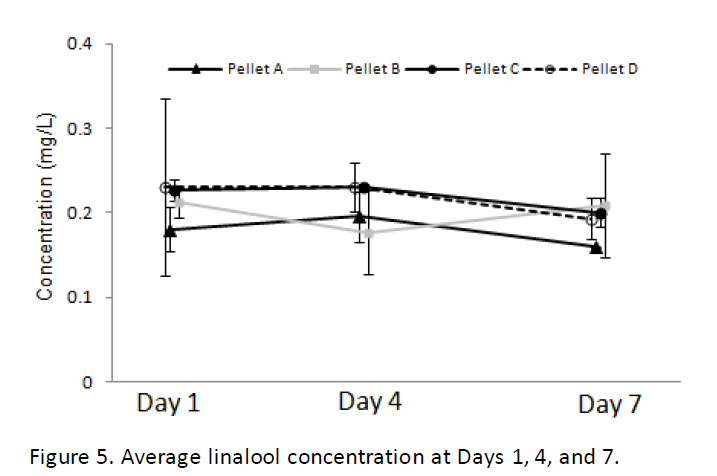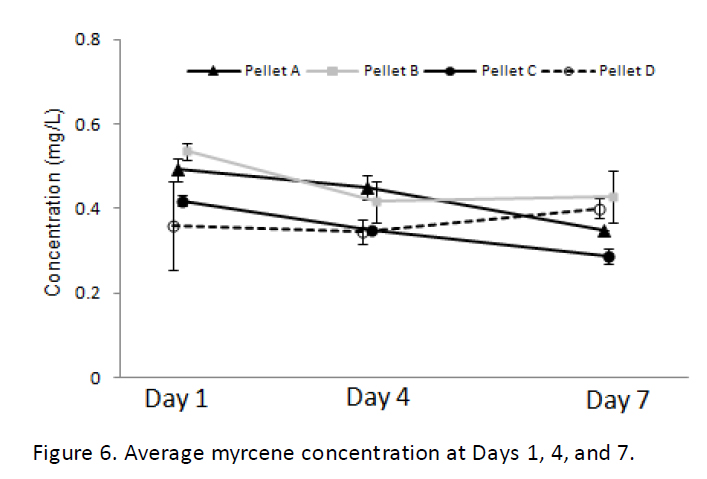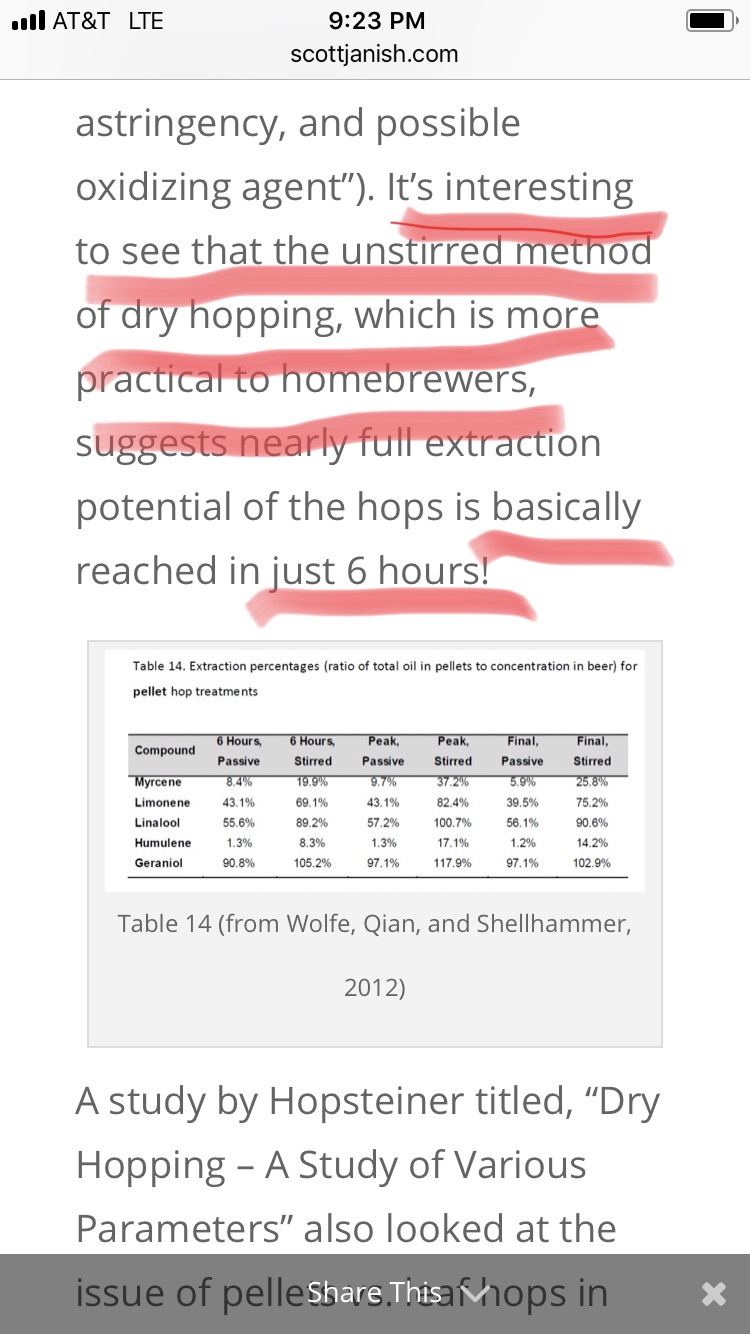If I'm not in a hurry, which is about half the time, I add 2 oz of corn sugar to the keg and let it sit at room temp for 2 weeks. I like the results.Hi all,
Apologies if this has been discussed or if there’s another thread on the topic:
For those of you kegging, what is your preferred method of carbonating for NEIPAs? I typically force carbonate either quickly by agitating the keg or over the course of 3 days at 30psi or so. I have a fully fermented beer that is dry hopping now. I’m considering using some gyle or krausen to increase softness and perhaps hop character(??). Is it worth the effort? I would need to brew a mini batch for this.
You are using an out of date browser. It may not display this or other websites correctly.
You should upgrade or use an alternative browser.
You should upgrade or use an alternative browser.
New England IPA "Northeast" style IPA
- Thread starter Braufessor
- Start date

Help Support Homebrew Talk:
This site may earn a commission from merchant affiliate
links, including eBay, Amazon, and others.
couchsending
Well-Known Member
- Joined
- Jun 21, 2016
- Messages
- 3,063
- Reaction score
- 2,256
The benefit to krausening is that you’re adding already fermenting beer so it takes a much shorter time for the main beer to carbonate.
Another benefit is that can also clean up your beer some, I did it once to clean up a beer with bad diacetyl.
Dgallo
Instagram: bantam_brews
You can add your lactose at any point since it is unfermentalble. Some people even add it to the keg and rack ontop of it. I only chose to add it on day 4 since that was when I was adding the fruit and wanted to minimize opportunities for oxygen contact.For those who have or are adding lactose, how much are you adding for a 5 gallon batch, and when are you adding it? I see Dgallo is adding at day 4. By then my beer is already in the keg spunding
Now to your question about how much. I will never add lactose to a traditional IPA or typical NEIPA; It is unneeded since you can gain sweetness and body through mash temps, specialty grains, and hoping schedule. However if your making a milkstout or desert/milkshake ipa than start at a half pound and work your way up. Since it’s unfermentable, if the half lb isn’t enough to your desired taste you can add more to the keg. If you are still bottling, you can do it all to taste in your bottling bucket the first time, just know this will expose the beer to oxygen this way.

$44.99
$49.95
Craft A Brew - Mead Making Kit – Reusable Make Your Own Mead Kit – Yields 1 Gallon of Mead
Craft a Brew

$479.00
$559.00
EdgeStar KC1000SS Craft Brew Kegerator for 1/6 Barrel and Cornelius Kegs
Amazon.com

$53.24
1pc Hose Barb/MFL 1.5" Tri Clamp to Ball Lock Post Liquid Gas Homebrew Kegging Fermentation Parts Brewer Hardware SUS304(Liquid Hose Barb)
yunchengshiyanhuqucuichendianzishangwuyouxiangongsi

$7.79 ($7.79 / Count)
Craft A Brew - LalBrew Voss™ - Kveik Ale Yeast - For Craft Lagers - Ingredients for Home Brewing - Beer Making Supplies - (1 Pack)
Craft a Brew

$58.16
HUIZHUGS Brewing Equipment Keg Ball Lock Faucet 30cm Reinforced Silicone Hose Secondary Fermentation Homebrew Kegging Brewing Equipment
xiangshuizhenzhanglingfengshop

$719.00
$799.00
EdgeStar KC2000TWIN Full Size Dual Tap Kegerator & Draft Beer Dispenser - Black
Amazon.com

$20.94
$29.99
The Brew Your Own Big Book of Clone Recipes: Featuring 300 Homebrew Recipes from Your Favorite Breweries
Amazon.com

$76.92 ($2,179.04 / Ounce)
Brewing accessories 1.5" Tri Clamp to Ball Lock Post Liquid Gas Homebrew Kegging Fermentation Parts Brewer Hardware SUS304 Brewing accessories(Gas Hose Barb)
chuhanhandianzishangwu

$33.99 ($17.00 / Count)
$41.99 ($21.00 / Count)
2 Pack 1 Gallon Large Fermentation Jars with 3 Airlocks and 2 SCREW Lids(100% Airtight Heavy Duty Lid w Silicone) - Wide Mouth Glass Jars w Scale Mark - Pickle Jars for Sauerkraut, Sourdough Starter
Qianfenie Direct

$10.99 ($31.16 / Ounce)
Hornindal Kveik Yeast for Homebrewing - Mead, Cider, Wine, Beer - 10g Packet - Saccharomyces Cerevisiae - Sold by Shadowhive.com
Shadowhive

$176.97
1pc Commercial Keg Manifold 2" Tri Clamp,Ball Lock Tapping Head,Pressure Gauge/Adjustable PRV for Kegging,Fermentation Control
hanhanbaihuoxiaoshoudian

$53.24
1pc Hose Barb/MFL 1.5" Tri Clamp to Ball Lock Post Liquid Gas Homebrew Kegging Fermentation Parts Brewer Hardware SUS304(Gas MFL)
Guangshui Weilu You Trading Co., Ltd

$28.98
Five Star - 6022b_ - Star San - 32 Ounce - High Foaming Sanitizer
Great Fermentations of Indiana

$159.99 ($26.66 / Count)
3M High Flow Series System BREW120-MS, 5616001, For Brewed Coffee and Hot Tea, Valve-in-Head Design
SpaceCityProviders

$22.00 ($623.23 / Ounce)
AMZLMPKNTW Ball Lock Sample Faucet 30cm Reinforced Silicone Hose Secondary Fermentation Homebrew Kegging joyful
无为中南商贸有限公司
I picked up some Dream Wave Fluctuation this weekend(equilibrium/Other Half), and it’s the best Neipa I’ve ever had. I know they use lactose in it, and OH likes to go heavy on the oats . So I’d like to experiment a bit with adding lactose and bumping up the oats
Dgallo
Instagram: bantam_brews
Dream wave is part of OH’s oat cream ipa series so they def are using lactose in it. I bet it’s something like 75 % 2row 15% oats 5% honey malt 5% lactose. Maybe even slightly higher on the lactoseI picked up some Dream Wave Fluctuation this weekend(equilibrium/Other Half), and it’s the best Neipa I’ve ever had. I know they use lactose in it, and OH likes to go heavy on the oats . So I’d like to experiment a bit with adding lactose and bumping up the oats
beervoid
Hophead & Pellet Rubber
I found colab beer descriptions from Other Half with up to almost 50% of Oats...Dream wave is part of OH’s oat cream ipa series so they def are using lactose in it. I bet it’s something like 75 % 2row 15% oats 5% honey malt 5% lactose. Maybe even slightly higher on the lactose
Dgallo
Instagram: bantam_brews
That sounds absurd to me and like a mash nightmare. But equilibrium knows there stuff and are pretty open about their process so if they said it, it’s trueI found colab beer descriptions from Other Half with up to almost 50% of Oats...
couchsending
Well-Known Member
- Joined
- Jun 21, 2016
- Messages
- 3,063
- Reaction score
- 2,256
They’re most likely using malted oats or a combo of malted and flaked. You can use higher percentages of oats when using malted. They’re somewhat of a pain to mill and sometimes a little harder to find.
beervoid
Hophead & Pellet Rubber
That was my thoughts as well, malted oats most part but still 50% is ridiculously high and these guys are masters at marketing.They’re most likely using malted oats or a combo of malted and flaked. You can use higher percentages of oats when using malted. They’re somewhat of a pain to mill and sometimes a little harder to find.
Just like some breweries claim to dry hop with 6 pounds per barrel... I really wonder how much of this is true and how much is just marketing.
The benefit to krausening is that you’re adding already fermenting beer so it takes a much shorter time for the main beer to carbonate.
Your already practicing patience with your beer...lagering/conditioning. Clearing.
People rush...8-10 days grain to glass and so on.
couchsending
Well-Known Member
- Joined
- Jun 21, 2016
- Messages
- 3,063
- Reaction score
- 2,256
Your already practicing patience with your beer...lagering/conditioning. Clearing.
People rush...8-10 days grain to glass and so on.
Yes but I’d rather only have it sitting at room temp to carbonate for 5-7 days instead of 14 when priming.
pittbrewing
Active Member
- Joined
- Sep 3, 2018
- Messages
- 43
- Reaction score
- 6
That was my thoughts as well, malted oats most part but still 50% is ridiculously high and these guys are masters at marketing.
Just like some breweries claim to dry hop with 6 pounds per barrel... I really wonder how much of this is true and how much is just marketing.
I don't think its that unrealistic.. My last neipa I dry hopped with 10 ounces for a 5 gal batch. 6 pounds in a barrel is just slightly more oz/gal then mine. (mine is 2 oz/gal, that is 2.2 oz/gal)
It is a straight fruit bomb. Other homebrewers/craft beer drinkers think I put fruit in it. There may be a few outliers that lie (pun intended) about dry hopping, but there are some super dry hopped beers I've drank lately. Especially from local breweries.
That being said, it is overkill IMO and I will tone it down a bit next time, but it is delicious none the less
pittbrewing
Active Member
- Joined
- Sep 3, 2018
- Messages
- 43
- Reaction score
- 6
Yes but I’d rather only have it sitting at room temp to carbonate for 5-7 days instead of 14 when priming.
Time is definitely of the essence. A friend brewed and had to bottle.. tried one at a week and it had turned a nasty purple-brown. Makes me think that this style isn't really worth bottling considering what a batch costs (at least in my case)
Dgallo
Instagram: bantam_brews
you’re also not trying to make a living, pay a lease or mortgage on a commercial property, and keep the lights on by selling pints lolI don't think its that unrealistic.. My last neipa I dry hopped with 10 ounces for a 5 gal batch. 6 pounds in a barrel is just slightly more oz/gal then mine. (mine is 2 oz/gal, that is 2.2 oz/gal)
It is a straight fruit bomb. Other homebrewers/craft beer drinkers think I put fruit in it. There may be a few outliers that lie (pun intended) about dry hopping, but there are some super dry hopped beers I've drank lately. Especially from local breweries.
That being said, it is overkill IMO and I will tone it down a bit next time, but it is delicious none the less
Dgallo
Instagram: bantam_brews
They’re talking about natural carbing kegs with krausen or priming sugar verse force carbingTime is definitely of the essence. A friend brewed and had to bottle.. tried one at a week and it had turned a nasty purple-brown. Makes me think that this style isn't really worth bottling considering what a batch costs (at least in my case)
pittbrewing
Active Member
- Joined
- Sep 3, 2018
- Messages
- 43
- Reaction score
- 6
you’re also not trying to make a living, pay a lease or mortgage on a commercial property, and keep the lights on by selling pints lol
Being that it says you're from albany, Im sure you have tried Foreign Objects? Some of their beers are a good example of what I mean. But it definitely applies to more local breweries near me. (Hitchhikers, Dancing Gnome, Eleventh Hour if you have an untappd)
isomerization
Well-Known Member
- Joined
- Feb 27, 2017
- Messages
- 1,422
- Reaction score
- 890
You can add your lactose at any point since it is unfermentalble. Some people even add it to the keg and rack ontop of it. I only chose to add it on day 4 since that was when I was adding the fruit and wanted to minimize opportunities for oxygen contact.
Now to your question about how much. I will never add lactose to a traditional IPA or typical NEIPA; It is unneeded since you can gain sweetness and body through mash temps, specialty grains, and hoping schedule. However if your making a milkstout or desert/milkshake ipa than start at a half pound and work your way up. Since it’s unfermentable, if the half lb isn’t enough to your desired taste you can add more to the keg. If you are still bottling, you can do it all to taste in your bottling bucket the first time, just know this will expose the beer to oxygen this way.
Specific reason not to add the Lactose at flameout? I’ve done that with my milkshake IPAs to (seemingly) no ill effects.
beervoid
Hophead & Pellet Rubber
6 pounds per barrel is almost 16oz in 5 gallons.I don't think its that unrealistic.. My last neipa I dry hopped with 10 ounces for a 5 gal batch. 6 pounds in a barrel is just slightly more oz/gal then mine. (mine is 2 oz/gal, that is 2.2 oz/gal)
It is a straight fruit bomb. Other homebrewers/craft beer drinkers think I put fruit in it. There may be a few outliers that lie (pun intended) about dry hopping, but there are some super dry hopped beers I've drank lately. Especially from local breweries.
That being said, it is overkill IMO and I will tone it down a bit next time, but it is delicious none the less
10oz in 5 gallons is about 4 pounds per barrel, from my experiments this is absolute borderline where you dont really taste a difference.
Commercial brewers aren't throwing money and hops away I hope.
Dgallo
Instagram: bantam_brews
No in theory there’s no reason not to add it at flame out because it’s not like it’s going to floc out or be converted to anything else during fermentation so it should have the same effect as being added post fermentation. I just personally like to get through the main portion of active fermentation before I add it.Specific reason not to add the Lactose at flameout? I’ve done that with my milkshake IPAs to (seemingly) no ill effects.
isomerization
Well-Known Member
- Joined
- Feb 27, 2017
- Messages
- 1,422
- Reaction score
- 890
No in theory there’s no reason not to add it at flame out because it’s not like it’s going to floc out or be converted to anything else during fermentation so it should have the same effect as being added post fermentation. I just personally like to get through the main portion of active fermentation before I add it.
I’ve always viewed it as “neutral” to Sacc yeast, but now I wonder if there would be a difference between the approaches. Lower O2 exposure and risk of contamination by adding during the boil was my logic.
Dgallo
Instagram: bantam_brews
I could be doing that for no good reason at all but to me the fermentation and the desired ester profile during active fermentation are far too important so I just want to ensure that happensI’ve always viewed it as “neutral” to Sacc yeast, but now I wonder if there would be a difference between the approaches. Lower O2 exposure and risk of contamination by adding during the boil was my logic.
Long time lurker, first time poster here. First off, thank you braufessor and many, many, MANY others in this thread for your contributions. It’s helped me expedite my learning curve in attempting to perfect this style.
I think I along with many have ditched the must-do biotransformation dry hop (although this may still be occurring from the whirlpool hops), but I’m struggling on what is the perfect timing for the single dry hop bomb. On this batch, I’m doing 6 oz on day 5 (4 gal batch), but I’ve tried day 0, day 2, day 3, day 7...
Does anyone have a go-to dry hop day that consistently produces great aroma/juice? I’ve seen so many different opinions that claim they nailed the juice bomb, so does which day really matter? I know brau’s latest says day 2-3, but that didn’t work for me last time. Seemed like fermentation may have burned off too much aroma/flavor (just my theory).
I’m only about 10-12 batches in, but I’m also thinking the quality of hops is huge for this style and stale hops may have caused poor results in my past batches.
Other info:
BIAB 4 gal batches
Always ferment with 1318 at 64 day 0-1, 66 day 2-4, 68 thereafter.
1 tsp CaCl, 0.5 tsp Gypsum adds to mash
Using 4 oz in whirlpool
Using NEIPA hops - citra, galaxy, Ella, Vic secret, el dorado, Amarillo, Strata etc...
I think I along with many have ditched the must-do biotransformation dry hop (although this may still be occurring from the whirlpool hops), but I’m struggling on what is the perfect timing for the single dry hop bomb. On this batch, I’m doing 6 oz on day 5 (4 gal batch), but I’ve tried day 0, day 2, day 3, day 7...
Does anyone have a go-to dry hop day that consistently produces great aroma/juice? I’ve seen so many different opinions that claim they nailed the juice bomb, so does which day really matter? I know brau’s latest says day 2-3, but that didn’t work for me last time. Seemed like fermentation may have burned off too much aroma/flavor (just my theory).
I’m only about 10-12 batches in, but I’m also thinking the quality of hops is huge for this style and stale hops may have caused poor results in my past batches.
Other info:
BIAB 4 gal batches
Always ferment with 1318 at 64 day 0-1, 66 day 2-4, 68 thereafter.
1 tsp CaCl, 0.5 tsp Gypsum adds to mash
Using 4 oz in whirlpool
Using NEIPA hops - citra, galaxy, Ella, Vic secret, el dorado, Amarillo, Strata etc...
Last edited:
isomerization
Well-Known Member
- Joined
- Feb 27, 2017
- Messages
- 1,422
- Reaction score
- 890
@NickC you shouldn’t think in terms of days, that means nothing to the yeast. Instead, shoot for the tail end of fermentation. This will be strain/process dependent, so a universal Day 2 (or 4 or 6) option doesn’t really exist.
If you have the ability to cold crash under pressure/gas, then the variables change, FYI.
If you have the ability to cold crash under pressure/gas, then the variables change, FYI.
Dgallo
Instagram: bantam_brews
Check out this link. Very interesting evidence based info on hop oil extraction that shows almost all dryhop specific Oils are extracted in the first 24 hours and that leaving hops in For longer than 4 days can actual cause a diminished return effect. http://scottjanish.com/hops-understanding-blends-oil-testing/Long time lurker, first time poster here. First off, thank you braufessor and many, many, MANY others in this thread for your contributions. It’s helped me expedite my learning curve in attempting to perfect this style.
I think I along with many have ditched the must-do biotransformation dry hop (although this may still be occurring from the whirlpool hops), but I’m struggling on what is the perfect timing for the single dry hop bomb. On this batch, I’m doing 6 oz on day 5 (4 gal batch), but I’ve tried day 0, day 2, day 3, day 7...
Does anyone have a go-to dry hop day that consistently produces great aroma/juice? I’ve seen so many different opinions that claim they nailed the juice bomb, so does which day really matter? I know brau’s latest says day 2-3, but that didn’t work for me last time. Seemed like fermentation may have burned off too much aroma/flavor (just my theory).
I’m only about 10-12 batches in, but I’m also thinking the quality of hops is huge for this style and stale hops may have caused poor results in my past batches.
Other info:
BIAB 4 gal batches
Always ferment with 1318 at 64 day 0-1, 66 day 2-4, 68 thereafter.
1 tsp CaCl, 0.5 tsp Gypsum adds to mash
Using 4 oz in whirlpool
Using NEIPA hops - citra, galaxy, Ella, Vic secret, el dorado, Amarillo, Strata etc...




@NickC you shouldn’t think in terms of days, that means nothing to the yeast. Instead, shoot for the tail end of fermentation. This will be strain/process dependent, so a universal Day 2 (or 4 or 6) option doesn’t really exist.
If you have the ability to cold crash under pressure/gas, then the variables change, FYI.
Thanks. Tail end meaning 2 points remaining or 10? I ferment in corny kegs, so I can cold crash under pressure. What’s that supposed to do?
Hmm... I’ll try to use this intel on my current batch. Wait for tail end of fermentation (as mentioned by isomerization above, and WeldWorks and others), add dry hop, allow a couple days to get to FG, then allow a couple days for diacetyl rest... Then jump to serving keg off the dry hop.Check out this link. Very interesting evidence based info on hop oil extraction that shows almost all dryhop specific Oils are extracted in the first 24 hours and that leaving hops in For longer than 4 days can actual cause a diminished return effect. http://scottjanish.com/hops-understanding-blends-oil-testing/
View attachment 617129
View attachment 617127
View attachment 617128
View attachment 617130
Is this close to your approach @Dgallo ? Anyone else?
Last edited by a moderator:
Northern_Brewer
British - apparently some US company stole my name
Check out this link. Very interesting evidence based info on hop oil extraction that shows almost all dryhop specific Oils are extracted in the first 24 hours and that leaving hops in For longer than 4 days can actual cause a diminished return effect.
I'd be bit cautious on that front - they're measuring the things that are easy to measure, which are the very smallest molecules. It seems that the bigger molecules take a bit longer to come out - anecdotally 48-72 hours seems to be needed to get the full flavour effect.
Similar threads
- Replies
- 4
- Views
- 1K
- Replies
- 2
- Views
- 216































![Craft A Brew - Safale BE-256 Yeast - Fermentis - Belgian Ale Dry Yeast - For Belgian & Strong Ales - Ingredients for Home Brewing - Beer Making Supplies - [3 Pack]](https://m.media-amazon.com/images/I/51bcKEwQmWL._SL500_.jpg)










